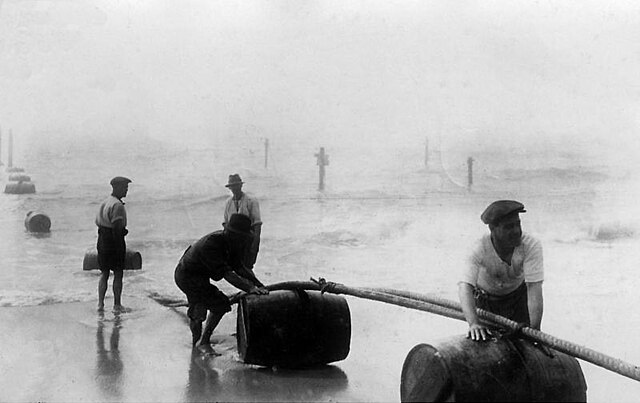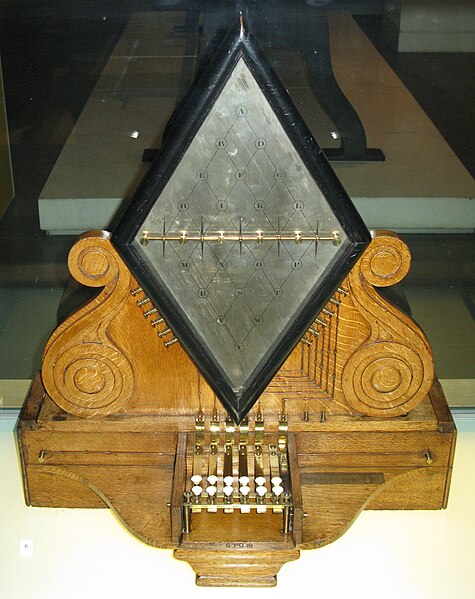Submarine communications cable
A submarine communications cable is a cable laid on the seabed between land-based stations to carry telecommunication signals across stretches of ocean and sea. The first submarine communications cables were laid beginning in the 1850s and carried telegraphy traffic, establishing the first instant telecommunications links between continents, such as the first transatlantic telegraph cable which became operational on 16 August 1858.
Submarine cables are laid using special cable layer ships, such as the modern René Descartes [fr], operated by Orange Marine.
A telegraph stamp of the British & Irish Magnetic Telegraph Co. Limited (c. 1862).
Operators in the submarine telegraph cable room at the GPO's Central Telegraph Office in London c. 1898
Landing of an Italy-USA cable (4,704 nautical miles long), on Rockaway Beach, Queens, New York, January 1925.
Telegraphy is the long-distance transmission of messages where the sender uses symbolic codes, known to the recipient, rather than a physical exchange of an object bearing the message. Thus flag semaphore is a method of telegraphy, whereas pigeon post is not. Ancient signalling systems, although sometimes quite extensive and sophisticated as in China, were generally not capable of transmitting arbitrary text messages. Possible messages were fixed and predetermined, so such systems are thus not true telegraphs.
Replica of a Chappe telegraph on the Litermont near Nalbach, Germany
Great Wall of China
Cooke and Wheatstone's five-needle, six-wire telegraph (1837)
A Morse key (c. 1900)

![Submarine cables are laid using special cable layer ships, such as the modern René Descartes [fr], operated by Orange Marine.](https://upload.wikimedia.org/wikipedia/commons/thumb/d/d1/France_Telecom_Marine_Rene_Descartes_p1150247.jpg/640px-France_Telecom_Marine_Rene_Descartes_p1150247.jpg)






